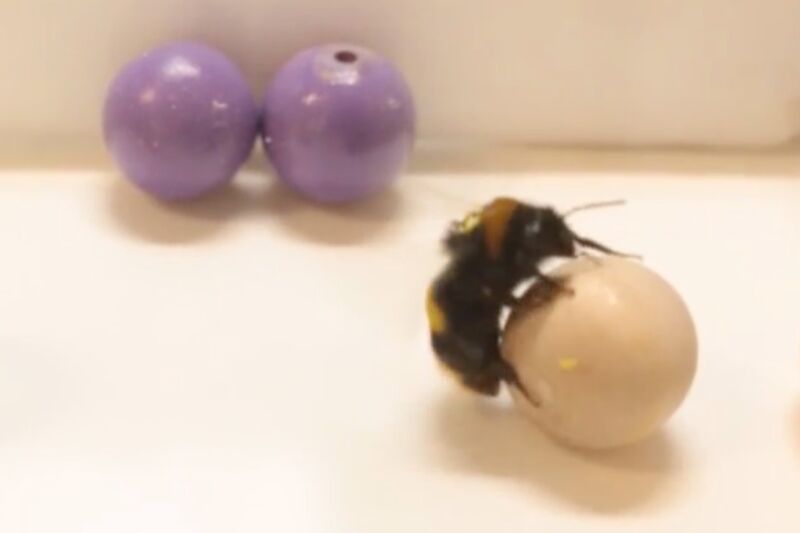Bees like to roll little wooden balls as a form of play, study finds

Many animals are known to engage in play—usually large-brained mammals (like humans) and birds. Now scientists think they have observed genuine play behavior in bees, which were filmed rolling small colored wooden balls, according to an October paper published in the journal Animal Behavior.
“This research provides a strong indication that insect minds are far more sophisticated than we might imagine,” said co-author Lars Chittka of Queen Mary University of London and author of a recent book, The Mind of a Bee. “There are lots of animals who play just for the purposes of enjoyment, but most examples come from young mammals and birds.”
Play behavior is typically divided into three broad categories, per the authors. Social play involves playful interactions between animals, usually juveniles engaged in play-fighting. For instance, there is anecdotal evidence from prior studies (one dating back to 1820) for social play among ants and young wasps. Locomotor play involves running, jumping, or similar intense and sustained movement that is not associated with a particular purpose. And object play involves manipulation of an object as a toy.
Chittka’s group conducted a previous study in 2017 in which they showed that bees could be trained to roll little wooden balls in order to receive a reward. But they also noticed instances where the bees opted to roll the balls even when there wasn’t an obvious reward or benefit. The balls had been placed in a tunnel that connected the hive to the experimental arena where the food was. Several bees walked over the balls or stopped to roll them on their way back and forth from the food. Chittka et al. wondered if this might be genuine play behavior, and decided to investigate further.
It’s not easy to design an experiment to conclusively demonstrate that bees (or other insects or animals) are engaged in play behavior specifically. It’s not like you can just ask the bees if they’re having fun. Five basic criteria must be met.
First, the behavior should not be performed in order to get food, attract a mate, or find shelter. Second, the play behavior should be “voluntary, spontaneous and rewarding in and of itself,” instead of being associated with a reward of some kind. Third, the motor actions for the play behavior should be different from the actions performed when searching for food or trying to mate. Fourth, the play behavior is repeated but not stereotyped, in order to differentiate between a one-off occurrence vs. an habitual tic. Finally, the play should be initiated when the subject is relaxed, to distinguish it from stress-related behaviors like pacing or walking, both which are often observed in caged zoo animals.
For these new experiments, Chittka et al. followed a similar setup. They placed 45 bees in the arena and let them choose to walk along a straight line to a foraging area with food, or wander off that path through an area with colored wooden balls. Even when they were done feeding, most bees (37) chose to roll balls for at least one extra day after, with 29 rolling balls for two extra days after feeding. Individual bees rolled balls between 1 and 117 times across the duration of the experiment, with the latter number suggesting at least some of the bees found the activity rewarding.
In a second experiment to help determine whether this qualified as play, another 42 bees were provided access to two color-coded chambers, one of which was empty while the other always contained wooden balls. Then the balls were removed and the bees were given a choice of which chamber to spend time in. They showed a strong preference for the chamber with a color that was previously associated with the wooden balls. A third experiment revealed that younger bees rolled balls more frequently than older bees, and male bees rolled balls for longer duration than female bees.
All in all, the authors argue that the behavior of the bees in their experiments met the five basic criteria for play. “It is certainly mind-blowing, at times amusing, to watch bumble bees show something like play,” said co-author Samadi Galpayage, a graduate student in Chittka’s lab. “They approach and manipulate these ‘toys’ again and again. It goes to show, once more, that despite their little size and tiny brains, they are more than small robotic beings. They may actually experience some kind of positive emotional states, even if rudimentary, like other larger fluffy, or not so fluffy, animals do.”
DOI: Animal Behavior, 2022. 10.1016/j.anbehav.2022.08.013 (About DOIs).
https://arstechnica.com/?p=1906979